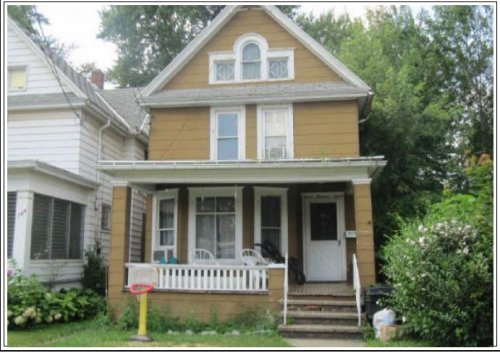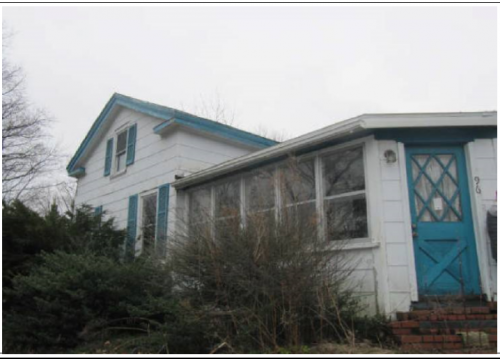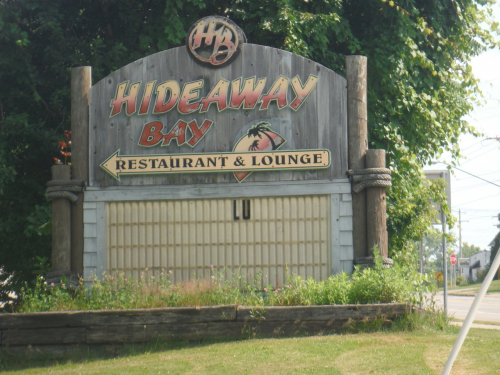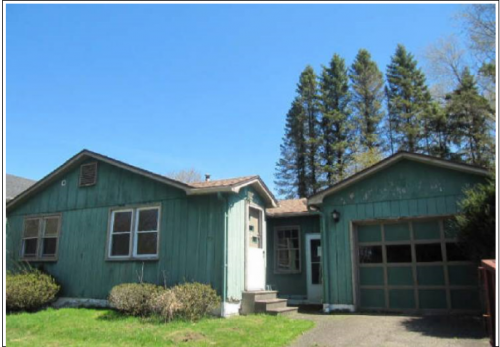Acquisition Disposition Policy | Chautauqua County Land Bank
This document is intended to provide guidance to the Chautauqua County Land Bank to use land banking as part of their community development and land use strategy.
 Download the PDF version of this document »
Download the PDF version of this document »
Policies Governing the Acquisition of Properties
The acquisition of properties by the Chautauqua County Land Bank Corporation, herein referred to as ‘Land Bank’, shall be governed by the following basic considerations and factors:
Annually, the Land Bank shall acquire, to the extent possible, the following types of properties in the following proportions:
Type A Properties – Approximately 1/2 of all properties acquired by the Land Bank annually shall be "A" Properties. These are properties that show promise in terms of the potential impact for reconstruction or perhaps demolition. They may be highly visible properties, properties that are identified in a plan, they may be the worst property on a block that otherwise has a decent stock, they may have an unfortunate history, they may have good "bones" (architecturally speaking), or they may have a developer who is interested in investing money into the project (an end game), but cannot afford to get into a bidding war as their future investment in the property will not make economic sense. These are typically foreclosed properties chosen prior to the auction.
Type B Properties – Approximately 1/3 of all properties acquired by the Land Bank annually shall be "B" Properties. These properties may be undesirable in their current state; however, it is envisioned that with some attention they can be brought up to a state where they are attractive to a reputable developer. It is believed that a conservative investment in cleaning up the property, installing a new roof, etc., would make the property attractive for development. These properties are worth saving based on their location and bones, but may require some attention prior to sale. They may be properties that are selected prior to the foreclosure auction or were not sold at the foreclosure auction and are selected after the auction.
Type C Properties – Approximately 1/6 of all properties acquired by the Land Bank annually shall be "C" Properties. Historically, approximately 2/3 of the properties on the foreclosure list typically have structures on them and 1/3 that do not. These properties are the "worst of the worst" that may be acquired prior to the foreclosure auction, after the foreclosure auction or after the RFP sale. In most cases, the "C" properties with structures will be demolished and it is the intent that these properties will be granted over to the adjoining landowner or to other interests so that they can be put back on the tax roll.
- Proposals and requests by governmental, nonprofit and for-profit entities that identify specific properties for ultimate acquisition and redevelopment, which: a) act as catalyst for further development; b) are part of a comprehensive development plan; c) support infrastructure, public and green space development; or d) reduce blight in the community. In particular, acquisition will be prioritized where the land bank participation is necessary to complete the redevelopment. In the case of municipal involvement, inter-local agreements (if required for development or maintenance) must be in place prior to acquisition.
- Properties located in reinvestment areas that would support strategic neighborhood stabilization and revitalization plans.
- Properties that meet the criteria for demolition, and such demolition will support blight elimination and neighborhood revitalization plans (Type C Properties). This activity is contingent upon the funding available for the Land Bank to facilitate demolition and any partnerships that may involve matching funding, such as HUD CDBG funding.
- Properties that would form part of a land assemblage development plan by either the land bank or partnering entities. (e.g. land banking)
- Vacant, non-conforming, or undevelopable properties that could be placed into a Side Lot Disposition Program or support a planned development (Type C Properties).
- Properties that may generate operating support for the functions of the Land Bank (Type A & B Properties).
- The Land Bank must be aware of any environmental conditions. If any adverse conditions are determined, a remediation plan with secured funding must be in place prior to consideration for acquisition by the Land Bank.
- Properties that would allow for the creation or expansion of green or community space and urban gardens (Type C Properties).
- Properties for which title issues are preventing the property from being developed to its highest and best use.
- Properties that have a designated end use in place prior to acquisition.
- Properties that are near schools, senior centers, or high visible areas that may pose safety issues to the community.
- Properties will be selected that support the mission of the Land Bank.
- Properties with adverse environmental conditions will not be accepted without a satisfactory funded plan for remediation approved by the Land Bank.
Policies Governing the Disposition of Properties
The disposition of properties shall be based upon a combination of two different factors: 1) The intended or planned use of the property, and 2) The nature and identity of the transferee of the property. The disposition of any given parcel will be based upon an assessment of the most efficient and effective way to maximize the benefits of an aggregate of the identified policies and priorities. The Board and Staff of the Land Bank shall at all times retain flexibility in evaluating the appropriate balancing of the priorities for the use of the property, priorities as to the nature of the transferee of properties, priorities concerning neighborhood and community development and methods for how properties will be marketed to potential transferees.
Use of Properties
- Owner-occupant housing
- Mixed owner-occupant and rental housing
- Side lots for transfer to adjoining landowners
- Development of public green space (parks and gardens)
- Mixed use development
- Supportive housing
- Commercial retail
- Commercial Office
- Parking
Nature and Identify of Transferees
- Individuals or families who can demonstrate that they will own, rehabilitate and occupy the residential property for a given period of time.
- Reputable, experienced and qualified real estate developers, partnerships, limited liability corporations, or joint ventures comprised of a private nonprofit corporations and a private for-profit entity.
- Reputable landlords or qualified real estate investors.
- Qualified nonprofits corporations that will hold title to properties on a long-term basis (primarily rental properties) or hold title to the property for purposes of subsequent redevelopment and re-conveyance to private third parties for homeownership.
- Local government entities that will use properties for a public purpose.
- Businesses that will own and occupy commercial properties.
General Land Disposition Policies
In determining the requirements for property disposition by the Land Bank, the following considerations shall be made. These policies pertain to the transfer of property that may be improved or unimproved.
- Individuals and entities that were the prior owners of property at the time of the tax foreclosure which transferred title to the County shall be ineligible to be the transferee of such property from the Land Bank.
- The transferee must not own any real property that: a) has any un-remediated citation or violation of the state and local codes and ordinances; b) is tax delinquent; c) was transferred to a local government as a result of tax foreclosure proceedings.
- All tax incentives and financing necessary for the development to be completed must be committed for the development prescribed in the development agreement prior to actual disposition.
- Options to purchase real estate may be available for a specified percentage of the purchase price with a negotiated time frame to be determined by the Land Bank. This fee will be credited to the parcel price at closing. If closing does not occur, the fee is forfeited. All option agreements are subject to all policies and procedures of the Land Bank pertaining to property transfers.
- A precise narrative description of future use of the property is required. The future use must be in-line with local development plans. The development agreement shall apply to stated use.
- The proposed use must be consistent with current zoning requirements or a waiver for non-conforming use is a condition precedent to the transfer.
- Transactions shall be structured in a manner that permits the Land Bank to enforce recorded covenants or conditions upon title pertaining to development and use of the property for a specified period of time. Such restrictions may be enforced, in certain cases, through reliance on subordinate financing held by the Land Bank.
- Any exception to the policies governing disposition shall be taken to the governing body of the Land Bank for approval.
- If code or ordinance violations exist with respect to the property at the time of the transfer, the development or transfer agreements shall specify a maximum period of time for elimination or correction of such violations, with the period of time be established as appropriate to the nature of the violation of the anticipated redevelopment or reuse of the property.
- The Land Bank may consider ‘Land Leasing’ as a method of disposition in any transactions.
- Land Bank will require potential transferees to submit a plan that includes, at a minimum, the following:
- Project Description that includes ultimate use of property
- Development Schedule
- Investment Plan including purchase price of property and projected development costs
- Experience of Transferee in undertaking similar projects
- Three (3) References
Policies Governing Development Agreements
In an effort to ensure that development occurs on property transferred by the Land Bank that is consistent with the agreed upon development, and on a reasonable schedule, the Land Bank will require that each property transfer be subject to a development agreement.
Each development agreement will consists of the following components:
- Project Description
- Development Scheduled
- Project Budget/Financing
- Enforcement Mechanism
Each development agreement will be drafted by the Land Bank and signed by both the Land Bank and the transferee at the time of transfer.
Side Lot Disposition Program
The Land Bank shall have a Side Lot Disposition Program that encourages the transfer of lots to the contiguous land owner or other entities that will maintain the property, put it into productive use, and pay taxes on it.
Pricing
- Properties sold as a side lot to an adjacent owner shall be set at a specific price established by the Land Bank. The cost of title insurance and/or survey is not included in the sale price of the lot, and is the responsibility of the buyer if they so desire.
Additional Requirements
- In the event that multiple adjacent property owners wish to acquire the same side lot, the lot shall either be transferred to the highest bidder for the property, or transferred to the property owner that the Land Bank Board feels is most capable of managing and maintaining the property.









